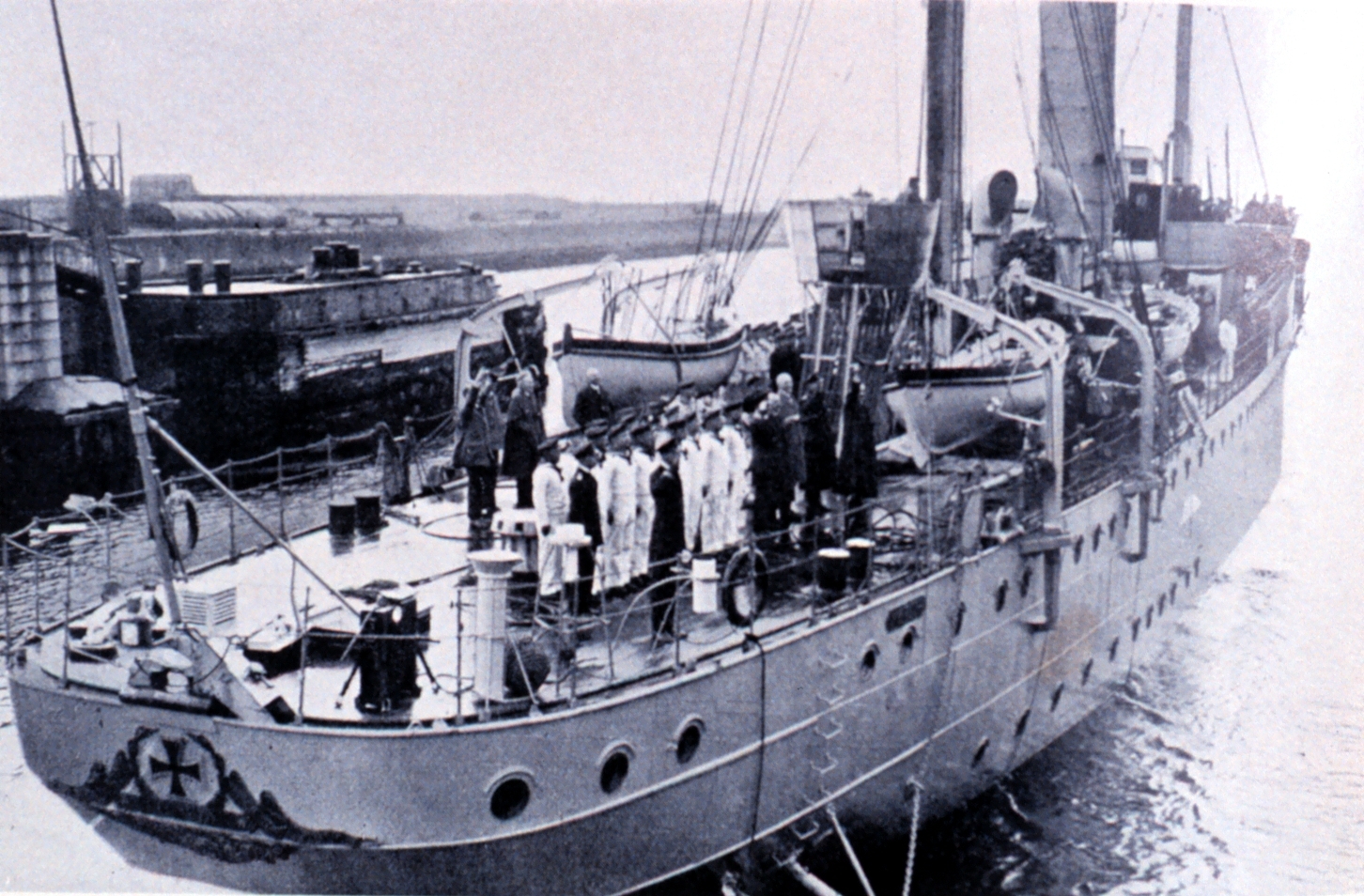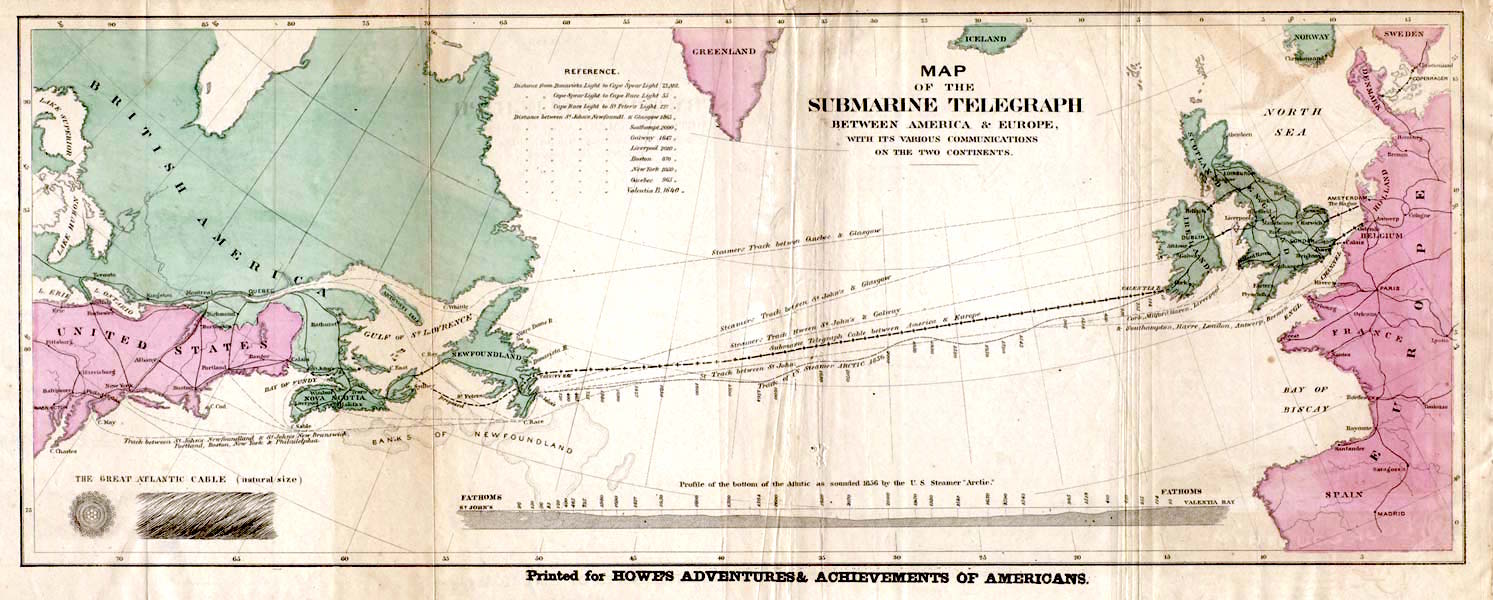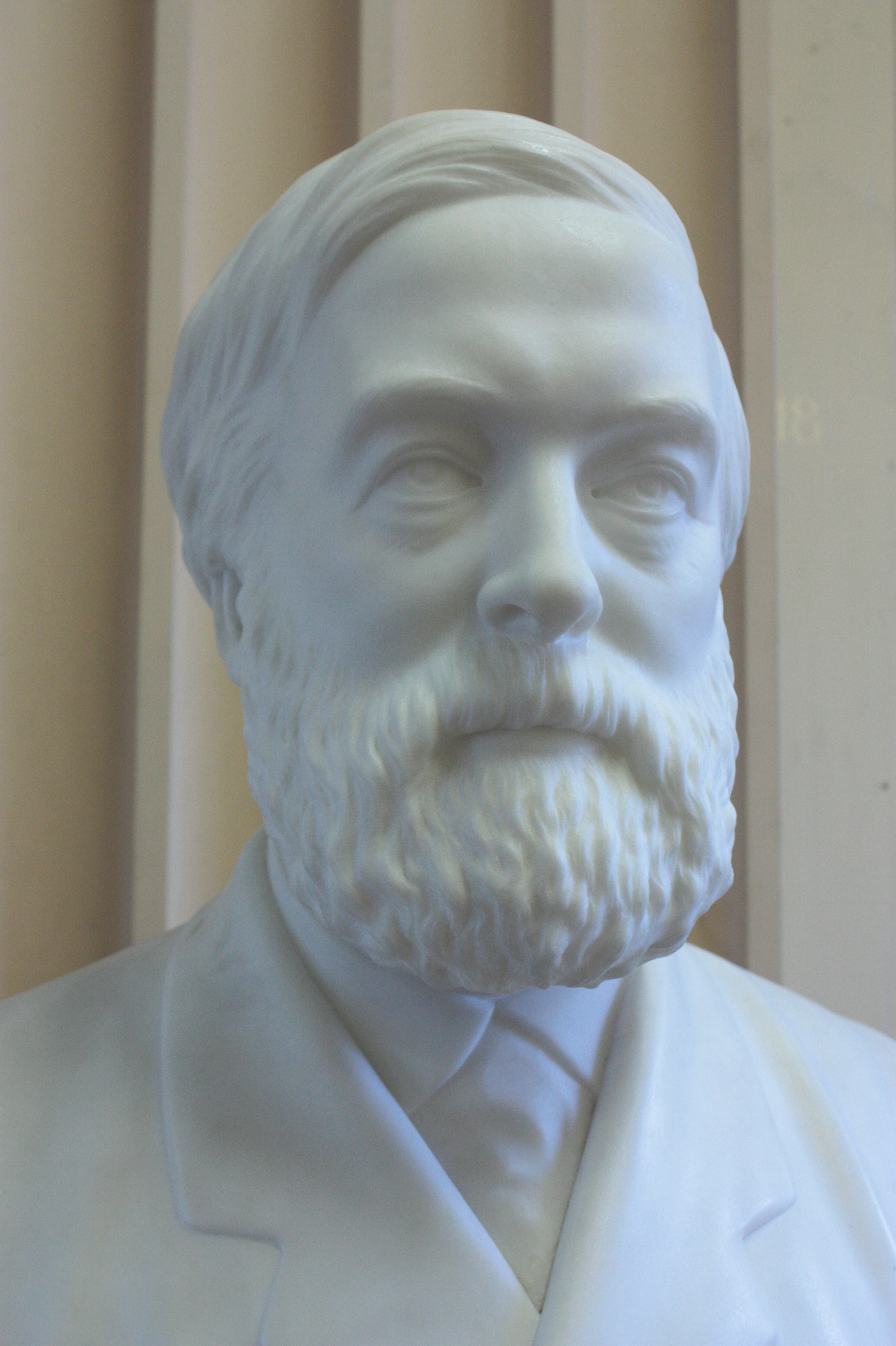|
Atlantic Mid-ocean Ridge
The Mid-Atlantic Ridge is a mid-ocean ridge (a divergent or constructive plate boundary) located along the floor of the Atlantic Ocean, and part of the longest mountain range in the world. In the North Atlantic, the ridge separates the North American from the Eurasian Plate and the African Plate, north and south of the Azores Triple Junction respectively. In the South Atlantic, it separates the African and South American plates. The ridge extends from a junction with the Gakkel Ridge (Mid-Arctic Ridge) northeast of Greenland southward to the Bouvet Triple Junction in the South Atlantic. Although the Mid-Atlantic Ridge is mostly an underwater feature, portions of it have enough elevation to extend above sea level, for example in Iceland. The ridge has an average spreading rate of about per year. Discovery A ridge under the northern Atlantic Ocean was first inferred by Matthew Fontaine Maury in 1853, based on soundings by the USS ''Dolphin''. The existence of the ridg ... [...More Info...] [...Related Items...] OR: [Wikipedia] [Google] [Baidu] |
Atlantic Bathymetry
The Atlantic Ocean is the second-largest of the world's five oceans, with an area of about . It covers approximately 20% of Earth's surface and about 29% of its water surface area. It is known to separate the "Old World" of Africa, Europe and Asia from the "New World" of the Americas in the European perception of the World. The Atlantic Ocean occupies an elongated, S-shaped basin extending longitudinally between Europe and Africa to the east, and North and South America to the west. As one component of the interconnected World Ocean, it is connected in the north to the Arctic Ocean, to the Pacific Ocean in the southwest, the Indian Ocean in the southeast, and the Southern Ocean in the south (other definitions describe the Atlantic as extending southward to Antarctica). The Atlantic Ocean is divided in two parts, by the Equatorial Counter Current, with the North(ern) Atlantic Ocean and the South(ern) Atlantic Ocean split at about 8°N. Scientific explorations of the Atlantic ... [...More Info...] [...Related Items...] OR: [Wikipedia] [Google] [Baidu] |
USS Dolphin (1836)
The third USS ''Dolphin'' was the brig in the United States Navy. Her plans were the basis of other brigs of that time. She was named for the aquatic mammal. She was launched on 17 June 1836 at New York Navy Yard, and commissioned on 6 September 1836. She sailed on 6 October under the command of Lieutenant W. E. McKenney to join the Brazil Squadron after a short cruise on the coast of Africa. She joined her squadron on 21 February 1837, and was employed in the waters along the Atlantic coast of South America to protect the rights and property of American citizens. She set sail from Bahia, Brazil on 17 April 1839, and arrived at New York City on 16 May, where she was decommissioned on 25 May. ''Dolphin'' made two cruises off the coast of Africa to suppress the slave trade from 18 December 1839 – 14 July 1840, and again from 5 November 1840 – 25 May 1841. On 7 September, she sailed to join the newly organized Home Squadron cruising on the Atlantic coast and in th ... [...More Info...] [...Related Items...] OR: [Wikipedia] [Google] [Baidu] |
Maurice Ewing
William Maurice "Doc" Ewing (May 12, 1906 – May 4, 1974) was an American geophysicist and oceanographer. Ewing has been described as a pioneering geophysicist who worked on the research of seismic reflection and refraction in ocean basins, ocean bottom photography, submarine sound transmission (including the SOFAR channel), deep sea Core samples of the ocean bottom, theory and observation of earthquake surface waves, fluidity of the Earth's core, generation and propagation of microseisms, submarine explosion seismology, marine gravity surveys, bathymetry and sedimentation, natural radioactivity of ocean waters and sediments, study of abyssal plains and submarine canyons. Biography He was born in Lockney, Texas, where he was the eldest surviving child of a large farm family. He won a scholarship to attend Rice University, earning a BA with honors in 1926. He completed his graduate studies at the same institution, earning an MA in 1927 and being awarded his PhD in 1 ... [...More Info...] [...Related Items...] OR: [Wikipedia] [Google] [Baidu] |
Bruce C
The English language name Bruce arrived in Scotland with the Normans, from the place name Brix, Manche in Normandy, France, meaning "the willowlands". Initially promulgated via the descendants of king Robert the Bruce (1274−1329), it has been a Scottish surname since medieval times; it is now a common given name. The variant ''Lebrix'' and ''Le Brix'' are French variations of the surname. Actors * Bruce Bennett (1906–2007), American actor and athlete * Bruce Boxleitner (born 1950), American actor * Bruce Campbell (born 1958), American actor, director, writer, producer and author * Bruce Davison (born 1946), American actor and director * Bruce Dern (born 1936), American actor * Bruce Gray (1936–2017), American-Canadian actor * Bruce Greenwood (born 1956), Canadian actor and musician * Bruce Herbelin-Earle (born 1998), English-French actor and model * Bruce Jones (born 1953), English actor * Bruce Kirby (1925–2021), American actor * Bruce Lee (1940–1973), martial ar ... [...More Info...] [...Related Items...] OR: [Wikipedia] [Google] [Baidu] |
Marie Tharp
Marie Tharp (July 30, 1920 – August 23, 2006) was an American geologist and oceanographic cartographer. In the 1950s, she collaborated with geologist Bruce Heezen to produce the first scientific map of the Atlantic Ocean floor. Her cartography revealed a more detailed topography and multi-dimensional geographical landscape of the ocean bottom. Tharp's discovery of the Mid-Atlantic Ridge caused a paradigm shift in earth science that led to acceptance of the theories of plate tectonics and continental drift.Lamont–Doherty Earth Observatory Bestows Heritage Award on Marie Tharp, Pioneer of Modern Oceanography Published Jul 10, 2001, Retrieved Oct 12, 2014 Early life and education Marie Tharp was born on Jul ...[...More Info...] [...Related Items...] OR: [Wikipedia] [Google] [Baidu] |
Seafloor Mapping
Seafloor mapping (or seabed mapping), also called seafloor imaging (or seabed imaging), is the measurement, mapping, and imaging of water depth of the ocean (''seabed topography'') or another given body of water. Bathymetric measurements are conducted with various methods, from depth sounding, sonar and Lidar techniques, to buoys and satellite altimetry. Various methods have advantages and disadvantages and the specific method used depends upon the scale of the area under study, financial means, desired measurement accuracy, and additional variables. Despite modern computer-based research, the ocean seabed in many locations is less measured than the topography of Mars. History The earliest methods of depth measurement on record are the use of sounding poles and weighted lines, recorded from Egypt more than 3000 years ago, and in use without significant improvement until the voyage of HMS ''Challenger'' in the 1870s, when similar systems using wires and a winch were used fo ... [...More Info...] [...Related Items...] OR: [Wikipedia] [Google] [Baidu] |
German Meteor Expedition
The German Meteor expedition (German: ''Deutsche Atlantik Expedition'') was an oceanographic expedition that explored the South Atlantic ocean from the equatorial region to Antarctica in 1925–1927. Depth soundings, water temperature studies, water samples, studies of marine life and atmospheric observations were conducted.Stein Expedition The survey vessel left Wilhelmshaven on 16 April 1925 with the oceanographer Alfred Merz in charge of the expedition.Nieder and Schroeder The ship zigzagged between Africa and South America and took echo soundings of the South Atlantic between 20° North and 60° South. In January 1926 the Strait of Magellan was transited; in March the same year a seamount was found and named ''Meteor Bank'' (). In June 1926 Merz, who already had health problems before the start of the expedition, was hospitalised at the German Hospital in Buenos Aires. He died of pneumonia on 25 August 1926. The overall lead of the expedition was assumed by the ship's c ... [...More Info...] [...Related Items...] OR: [Wikipedia] [Google] [Baidu] |
Indian Ocean
The Indian Ocean is the third-largest of the world's five oceanic divisions, covering or ~19.8% of the water on Earth's surface. It is bounded by Asia to the north, Africa to the west and Australia to the east. To the south it is bounded by the Southern Ocean or Antarctica, depending on the definition in use. Along its core, the Indian Ocean has some large marginal or regional seas such as the Arabian Sea, Laccadive Sea, Bay of Bengal, and Andaman Sea. Etymology The Indian Ocean has been known by its present name since at least 1515 when the Latin form ''Oceanus Orientalis Indicus'' ("Indian Eastern Ocean") is attested, named after Indian subcontinent, India, which projects into it. It was earlier known as the ''Eastern Ocean'', a term that was still in use during the mid-18th century (see map), as opposed to the ''Western Ocean'' (Atlantic Ocean, Atlantic) before the Pacific Ocean, Pacific was surmised. Conversely, Ming treasure voyages, Chinese explorers in the Indian Oce ... [...More Info...] [...Related Items...] OR: [Wikipedia] [Google] [Baidu] |
Cape Agulhas
Cape Agulhas (; pt, Cabo das Agulhas , "Cape of the Needles") is a rocky headland in Western Cape, South Africa. It is the geographic southern tip of the African continent and the beginning of the dividing line between the Atlantic and Indian Oceans according to the International Hydrographic Organization. Historically, the cape has been known to sailors as a major hazard on the traditional clipper route. It is sometimes regarded as one of the great capes. It was most commonly known in English as Cape L'Agulhas until the 20th century. The town of L'Agulhas is located near to the cape. Geography Cape Agulhas is located in the Overberg region, 170 kilometres (105 mi) southeast of Cape Town. The cape was named by Portuguese navigators, who called it ''Cabo das Agulhas''—Portuguese for "Cape of Needles"—after noticing that around the year 1500 the direction of magnetic north (and therefore the compass needle) coincided with true north in the region. The cape is ... [...More Info...] [...Related Items...] OR: [Wikipedia] [Google] [Baidu] |
University Of Oklahoma
The University of Oklahoma (OU) is a Public university, public research university in Norman, Oklahoma. Founded in 1890, it had existed in Oklahoma Territory near Indian Territory for 17 years before the two Territories became the state of Oklahoma. In Fall 2022, the university had 29,705 students enrolled, most at its main campus in Norman. Employing nearly 3,000 faculty members, the school offers 152 Bachelor's degree, baccalaureate programs, 160 Master's degree, master's programs, 75 doctorate programs, and 20 majors at the first professional level. The university is Carnegie Classification of Institutions of Higher Education, classified among "R1: Doctoral Universities – Very high research activity". According to the National Science Foundation, OU spent $283 million on research and development in 2018, ranking it 82nd in the nation. Its Norman campus has two prominent museums, the Fred Jones Jr. Museum of Art, specializing in French Impressionism and Native Americans in the ... [...More Info...] [...Related Items...] OR: [Wikipedia] [Google] [Baidu] |
Transatlantic Telegraph Cable
Transatlantic telegraph cables were undersea cables running under the Atlantic Ocean for telegraph communications. Telegraphy is now an obsolete form of communication, and the cables have long since been decommissioned, but telephone and data are still carried on other transatlantic telecommunications cables. The first cable was laid in the 1850s from Valentia Island off the west coast of Ireland to Bay of Bulls, Trinity Bay, Newfoundland. The first communications occurred on 16 August 1858, but the line speed was poor, and efforts to improve it caused the cable to fail after three weeks. The Atlantic Telegraph Company led by Cyrus West Field constructed the first transatlantic telegraph cable. The project began in 1854 and was completed in 1858. The cable functioned for only three weeks, but was the first such project to yield practical results. The first official telegram to pass between two continents was a letter of congratulations from Queen Victoria of the United ... [...More Info...] [...Related Items...] OR: [Wikipedia] [Google] [Baidu] |
Charles Wyville Thomson
Sir Charles Wyville Thomson (5 March 1830 – 10 March 1882) was a Scottish natural historian and marine zoologist. He served as the chief scientist on the Challenger expedition; his work there revolutionized oceanography and led to his knighthood. Life Thomson was born at Bonsyde, in Linlithgow, West Lothian, on 5 March 1830, the son of Andrew Thomson, a surgeon in the service of the East India Company, and his wife Sarah Ann Drummond Smith. He was baptised Wyville Thomas Charles Thomson, and changed his name in 1876. He was educated under Charles Chalmers at Merchiston Castle School, then from 1845 studied medicine at the University of Edinburgh graduating with an MD. However, his focus turned from medicine to natural science, and he joined the Botanical Society of Edinburgh in 1847, and soon after became secretary to the Royal Physical Society of Edinburgh. In 1850 he was attending the botany class of John Hutton Balfour at the University. In 1850 he was appointed lecture ... [...More Info...] [...Related Items...] OR: [Wikipedia] [Google] [Baidu] |


.jpg)





